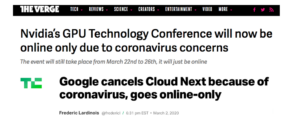TBV Insights

Making digital selling a top priority
When it comes to digital transformation in B2B marketing and sales, marketing has led the way in recent years. But now B2B sales teams are finding that they need get up to speed with digital selling in a hurry. “The pandemic makes digital selling absolutely essential to hitting goal,” says

Make your online video meeting more like “real” video
For many sales professionals, conducting online video meetings is now a big part of the job. And, it’s not something that comes naturally to most of us. Even if you perform well and the group resists talking over one another, attention will wander in online meetings. Multiple talking heads on

Better video in online sales meetings
Increased familiarity with online video platforms like Zoom has opened up opportunities to stand out from the crowd with better quality video. Maybe you’ve already improved your on-camera game with expert lighting tips or by adding a spiffy virtual background. But there are still plenty of opportunities to make better

Video for online sales communication: free tools
Looking to host better meetings and raise the level of your working-from-home game with video? Just about everybody is using video for online sales communication these days, not just “inside sales.” Here are some free tools for videoconferencing, video production, virtual classrooms, interactive video, and more, that you may not

New and different videos for online meetings
Are you prepping for a meeting that has unexpectedly been moved online in response to the coronavirus crisis? If so, you’re probably up against the fact that B2B sales presentations and interactions on the small screen are pretty low-energy compared to live meetings and presentations. You can boost the energy

Video marketing statistics you can argue with
Here’s an infographic chock full of video marketing statistics you can use to argue your need for a bigger video marketing budget. Candidly, I’m not a big fan of infographics. Too many cite numbers that are unverifiable (like the 7-second attention span of a goldfish), or questionable sources (like other
